The question, 'how is sparkling wine made?' is multi-faceted. Each winery approaches production differently, from grape varieties, to ageing, to storing and serving. In this three part series, our winemaker, Tobias Tullberg, aims to address all things sparkling wine.
What is English sparkling wine made from?In theory, an English sparkling wine could be made with any grape, but the best examples are made from the traditional Champagne varieties: Chardonnay, Pinot Noir and Pinot Meunier – blended, or individual. Indeed, this is what we make our English Fizz from at Hambledon Vineyard.
Here, the grapes grow on the same chalk that you find in the Grand Cru vineyards in Champagne’s Côte des Blancs – arguably the best terroir in the world for traditional method sparkling wine.
How is English sparkling wine made?Sparkling wine can be made in many different ways. The most qualitative technique is the traditional method made famous by the Champagne region of France.
FermentationYou begin by making the still “base wine” or vin clair in the original French. This is then blended into various cuvées before being bottled for a second fermentation, referred to as the prise de mousse. Sugar, in the form of a liqueur, is added to the wine together with a yeast culture just moments before bottling in order for this second fermentation to take place in the bottles. The bottles are sealed by a plastic bidule and a crown cap before being stacked horizontally, sur lattes. When the yeast consumes the sugar it turns it into alcohol and carbon dioxide. It’s the pressure from this carbon dioxide that will ultimately form the bubbles.
AgeingAfter the second fermentation, the yeast dies and forms a sediment in the bottle called the lees. Ageing the wine on the lees, in bottle, is the next step in the process. Autolysis, the enzymatic degradation of the yeast cells, alters the chemical composition of the wine, which in traditional method sparkling wines, creates the characteristic aromas of bread and pastries, as well as making the wine rounder and more full-bodied.
UK Appellation laws dictate that the wine must be kept on the lees for a minimum of 9 months, however, it’s usually after 18 months that autolysis has a significant effect on the wine. At Hambledon Vineyard this process is considered essential to create quality sparkling wine, hence we keep our wines sur lattes for between 24 and 84 months, depending on the cuvée.
DisgorgingWhen a wine has spent enough time on the lees, the cells are slowly collected in the neck of the bottle by gradually turning and tilting them– a practice known as riddling or remuage. This can be done by hand on pupitre or in a riddling machine – at Hambledon Vineyard we do both. The bottles are then disgorged by placing them upside down, in a neck-freezer, and cooling the tips to at least -25˚C. This freezes a small portion of the wine, so when the capsules are opened, the pressure ejects the ice-block – the low temperature ensuring that very little wine is lost.
At Hambledon Vineyard, there is no residual sugar in our wines, they are always fermented dry, the sugar is added – hence the term dosage - just before corking. Just before corking, the bottles are dosed with the liqueur d’expédition, which decides the wine's sugar level and is referred to on the label by designations such as Brut, Demi-Sec, etc. We make our own liqueur out of the very wine we are disgorging, and cane sugar, usually in a 1:1 ratio. This is the dosage and it is selected for the individual cuvée in the aptly named 'dosage tasting'- which searches for the ideal balance between expression of terroir, fruit and acidity.
After a few weeks of letting the sugar integrate into the wine it is ready to be enjoyed.
Which sparkling wine has the least sugar?The traditional method sparkling wine with the least sugar, is the one with no sugar added. These have a few different designations that all mean the same thing, such as zero dosage, brut zero, brut nature and even brut sauvage.
As most traditional method sparkling wine contains roughly the same amount of alcohol, the caloric content is largely owing to sugar levels. If no sugar has been added, it will have less calories than one that has several grams per litre added. Some sparkling wines however have very little sugar added to them which is the case at Hambledon. Our Hambledon Vineyard Classic Cuvée is currently dosed at 4.5 g/l and our Première Cuvée has as little as 2.5 g/l – a very guilt free pleasure.
To find out first hand how our wines are made here at Hambledon Vineyard, book a tour and wine tasting today!





